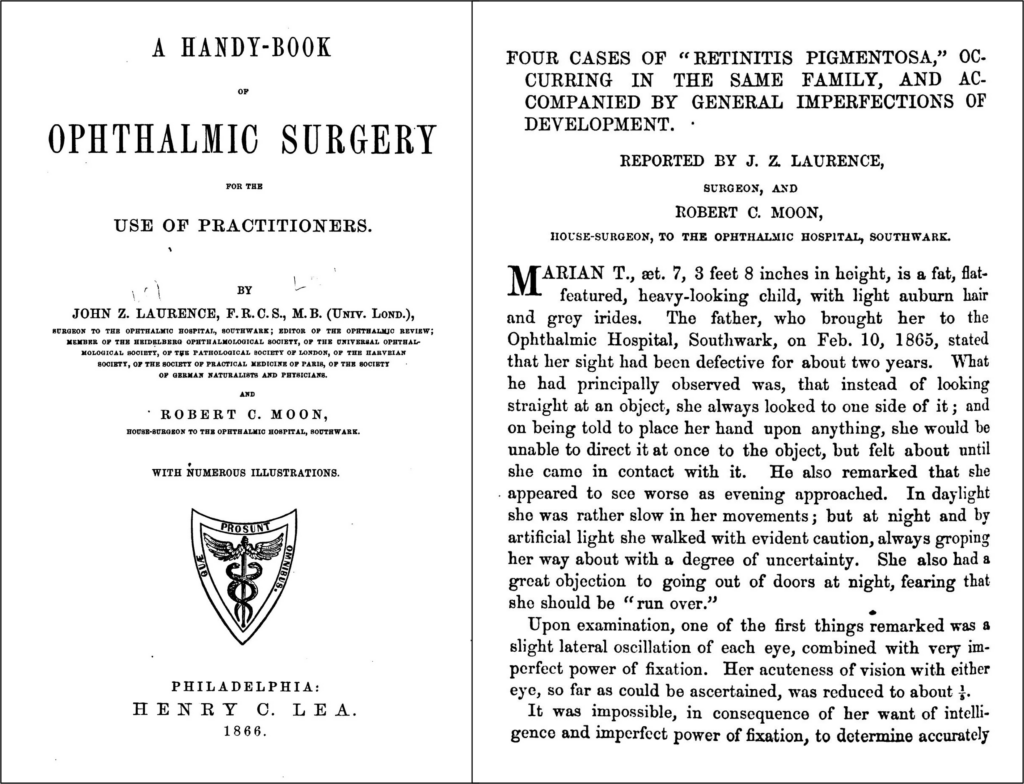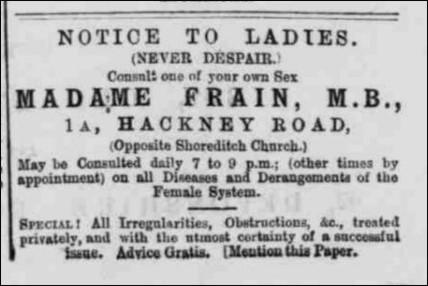CONTENT WARNING: the following contains descriptions of historic abortion that some readers may find upsetting
It is now two years since the United States Supreme Court overturned the historic ruling, known as Roe vs Wade (1973), which established a woman’s qualified constitutional right to abortion. Despite a sense that the new ruling marked a seismic shift in attitudes towards reproductive rights, in reality Roe vs Wade was under threat from the moment it passed into federal law. Few topics are as contentious or as polarising as abortion, which places a woman’s jurisdiction over her body against the right to life of an ‘unborn child’. Even this seemingly bland description betrays the emotional battlefield that abortion occupies: is a foetus an ‘unborn child’ (still more contentiously, a ‘not-yet-born child’)? And, if so, at what stage in the pregnancy does it become one?
In Britain, a woman’s right to choose an abortion remains enshrined in law under the 1967 Abortion Act, but it is far from an unfettered right. It cannot take place after the twenty-fourth week of pregnancy; it must be authorised by two doctors on compassionate grounds; and it must be performed by a registered medical practitioner. Nonetheless, like Roe vs Wade, the 1967 Act was an official recognition that attitudes towards abortion had changed over the decades and centuries that preceded it. Between 1800 and 1900, for example, there was a noticeable hardening of attitudes towards abortion in Britain.
The first statutory measure to regulate it came under Lord Ellenborough’s Act of 1803, which established that it was an offence to “attempt through poisoning to procure a miscarriage”. This was followed by the 1861 Offences Against the Person Act, which not only confirmed a maximum of life imprisonment for someone performing an abortion, but explicitly confirmed that a pregnant woman could also be liable for ‘self-abortion’. It also created a new offence of obtaining or supplying drugs or the means to perform an abortion, and it remained in force until 1967.
Consistent with attitudes towards abortion overall, historians have disagreed about why it became so controversial in the course of the nineteenth century. Some have suggested it was a reflection of increasing religious or moral concern over the wellbeing of the ‘unborn child’. Others, that it had more to do with the welfare of the woman herself, whose life was imperilled by the actions of ‘backstreet abortionists’ and potentially dangerous abortifacient drugs. Many feminist voices point to growing restrictions on women’s control over their own bodies, and a moral tone which blamed women alone for ‘unsanctioned’ sex and pregnancy. Finally, there are those who have suggested that it was an attempt by an increasingly powerful medical establishment to restrain ‘alternative’ practitioners who had always offered these services, such as midwives, herbalists and traditional healers.
This last line of reasoning, while highly persuasive, nonetheless invites questions about why so many orthodox medics became involved in illegal abortion. While there is some acknowledgement in the literature that this was the case (see, for example, Alannah Tomkins’ recent book, below), there is very little analysis of what led trained physicians to endanger both their patients lives’ and their own liberty and reputation in this way. Which leads us, finally, to the surprising case of Dr Moon.

Robert Charles Moon was a highly respected surgeon, born in Brighton in 1844. As a young hospital doctor, he had co-authored a book on ophthalmic surgery and a number of articles on a rare disease still familiarly known as Laurence-Moon syndrome. Moon’s interest in eye disease was the result of helping his father, who lost his sight in childhood, translate reading matter into a highly successful form of embossed print for the blind known as ‘Moon type’. Simpler than braille to learn, it is still taught to those with less touch sensitivity or poor motor control. According to some sources, he was still working at the South London Ophthalmic Hospital in 1878; but we know that in that year he was also renting rooms at a lodging house back in Brighton, because in July 1878 he was convicted of performing an illegal abortion on a young woman, Emily Hockley, that led directly or indirectly to her death.
Hockley’s fiancé, George Coleman, had originally visited a local chemist, Henry Darley, who sold him a mixture which he said would put her “all right”. However, after several drafts, though becoming unwell, Hockley remained pregnant and Darley recommended the couple to Moon at his lodgings in Pelham Street. Moon also assured them that his methods “never failed” (implying this was not the first time he’d done this kind of thing) and gave them another bottle of mixture; but, as before, it did not have the desired effect and Hockley returned to his apartment where, it was alleged, Moon performed a surgical abortion. A few days after her last visit, Hockley was admitted to the Sussex County Hospital with a fever, where it quickly became apparent that she was in the process of miscarrying. Her child was born dead and Hockley herself died soon after. Following a post mortem it was found that there was severe internal inflammation, most probably the result of the drugs she had taken or a botched surgical intervention.
The tragedy of Emily Hockley is further complicated by the fact that, during the trial, two women came forward to claim that Moon had performed similar operations on them, and although their testimony was ruled inadmissible it is clear that the court believed them. What is more, one of the women claimed to have been introduced to Moon by a Madame Frain, who was also brought to trial but acquitted on a technicality. In some ways, this last revelation is the most startling of all.
Madame Frain (or Frain Brown) was a notorious figure in late-nineteenth century England. She and her husband, ‘Professor’ Frain Brown, were well-known herbalists who moved from town to town, advertising their remedies extensively in local and national newspapers. Madame Frain, in particular, specialised in ‘Diseases and Derangements of the Female System’. Her adverts guaranteed: ‘All Irregularities, Obstructions, &c., treated privately, and with the utmost certainty of a successful issue’. She was prosecuted several times under the 1861 Act, and sentenced more than once to prison.

All of which adds to the intrigue surrounding the respectable Dr Moon. Why did he carry on a sideline in illegal abortion? It is unlikely that he needed the money, and in the end it cost him his reputation and his liberty (he was sentenced to fifteen years imprisonment for procuring an abortion on Emily Hockley). Why, as a scientist and medical specialist, did he consort with the likes of Madame Frain, herbalist, notorious abortionist and (in the language of the time) ‘Quack Doctress’ extraordinaire? At this stage, we can only offer conjecture. It may have been simple greed on his part: it was reported that he received two guineas for his services. Perhaps it served to feed some kind of weakness or vice of his own. Or was it, perhaps, a misguided attempt to offer an essential service to working women which was increasingly being denied to them in the moral and legal climate of the time?
Whatever the true motives behind Moon’s actions, his case reminds us of one important fact: that, at times in the nineteenth century, the border between what we now understand as ‘orthodox’ and ‘unorthodox’ – and even, sometimes, respectable and disreputable – medical practice was paper thin.
- The historiography on the topics considered here is considerable, but for recent work see: A. Tomkins, Medical Misadventure in an Age of Professionalisation, 1780-1890 (MUP, 2017), esp. Chapter 3; A-M. Kilday and David Nash, Shame and Modernity in Britain: 1890 to the Present (Palgrave Macmillan, 2017), esp. Chapter 5;